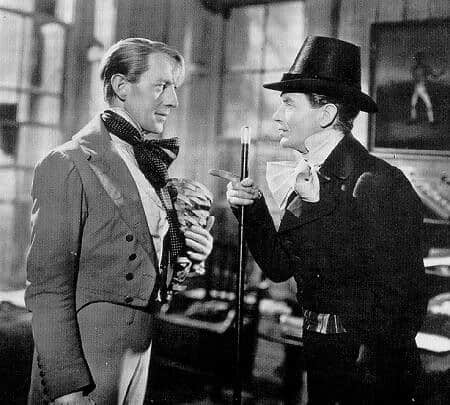Introduction
Great Expectations, written by Charles Dickens, is a classic novel that has captivated readers since its publication in 1861. With its intricate plot, memorable characters, and timeless themes, the novel continues to be celebrated for its exploration of social class, ambition, and the pursuit of identity. In this article, we will delve into the various aspects of the novel, including the plot and storyline, the characters, themes and symbols, writing style, setting and atmosphere, historical context, and the novel’s impact and reception.
Plot and Storyline
Great Expectations follows the life of Philip Pirrip, better known as Pip, from his humble beginnings as an orphaned boy living with his abusive sister and her kind-hearted blacksmith husband, Joe Gargery, in the marshes of Kent. Pip’s life takes an unexpected turn when he encounters an escaped convict, Abel Magwitch, who demands food and a file to remove his chains. Frightened yet compassionate, Pip helps the convict, unknowingly setting in motion a chain of events that will shape his future.
Pip’s encounter with Magwitch serves as the catalyst for his transformation. Shortly after, Pip is contacted by Miss Havisham, a wealthy, eccentric woman who lives in a dilapidated mansion called Satis House. Miss Havisham, still wearing her wedding gown from years ago, has raised Estella, a beautiful but cold-hearted girl, to break men’s hearts revenge for her own disappointment in love. Pip falls in love with Estella, and his desire to become a gentleman and win her affections becomes his driving force.
Through a mysterious benefactor, Pip is granted “great expectations” and moves to London to pursue a life of wealth and status. However, the newfound fortune comes at a cost as Pip becomes disconnected from his roots and the people who truly care for him. As the story progresses, secrets are revealed, and Pip learns valuable lessons about love, loyalty, and the true meaning of happiness.
Characters
Great Expectations features a rich cast of characters, each with their own unique traits and motivations. Pip, the protagonist, undergoes a profound transformation throughout the novel. Initially, he is portrayed as an innocent and impressionable young boy, but as he acquires wealth and social status, he becomes arrogant and unappreciative. Pip’s growth lies in his realization that material wealth does not equate to happiness and that true worth is found in genuine connections and self-acceptance.
Miss Havisham, a tragic figure, embodies the themes of time and decay. Her life has been frozen in the moment of her failed wedding, and she raises Estella to wreak vengeance on men. Estella, beautiful yet emotionally distant, represents the damaging effects of a loveless upbringing and societal expectations. She serves as a foil to Pip, highlighting the importance of emotional and moral development.
Joe Gargery, Pip’s brother-in-law, is a kind-hearted and humble blacksmith who remains a steadfast presence throughout the novel. His unwavering loyalty and unconditional love for Pip emphasize the significance of family and genuine relationships.
Themes and Symbols
Great Expectations explores several profound themes. One of the central themes is social class and its impact on identity. Dickens criticizes the rigid class structure of Victorian society and highlights the inequality and snobbery that accompany it. Pip’s desire to rise above his humble origins and become a gentleman exposes the pitfalls of social climbing and the dangers of valuing material wealth over personal connections.
Another significant theme is ambition and its consequences. Pip’s aspirations for a better life drive him to pursue his “great expectations,” but he soon realizes that success does not necessarily equate to happiness. Dickens underscores the importance of self-discovery and finding contentment in one’s true self, rather than striving for external validation.
The novel is replete with symbols that deepen its meaning. Miss Havisham’s decaying mansion, Satis House, symbolizes the destructive power of stagnation and the consequences of dwelling on past traumas. The motif of imprisonment, both literal and metaphorical, represents the characters’ entrapment in social expectations, personal obsessions, and their own past mistakes.
Writing Style
Charles Dickens’ writing style is renowned for its vivid imagery, detailed descriptions, and memorable characters. He masterfully captures the essence of Victorian England, depicting the stark realities of the working class, the opulence of the upper class, and the stark contrasts between the two.
Dickens employs various literary techniques to enhance the story’s impact. His use of foreshadowing creates suspense and anticipation, keeping readers engaged throughout. The novel’s narrative structure, presented as Pip’s retrospective account, allows for reflection and introspection, providing deeper insights into the characters’ thoughts and motivations.
One of Dickens’ strengths lies in his ability to create distinct and memorable characters through their dialogue. Whether it is Miss Havisham’s eccentric ramblings or Joe Gargery’s simple yet profound wisdom, the characters’ voices leap offthe page, making them feel alive and relatable.
Setting and Atmosphere
The setting of Great Expectations plays a significant role in shaping the story’s tone and atmosphere. The novel is primarily set in two locations: the marshes of Kent and the bustling metropolis of London. The stark contrast between these two settings reflects the dichotomy of Pip’s journey.
The marshes of Kent, with their desolate and eerie landscapes, create a sense of isolation and uncertainty. They serve as a metaphorical representation of Pip’s humble origins and the confines of his social status. In contrast, the vibrant and bustling city of London represents Pip’s pursuit of wealth, status, and the illusions of the upper class. However, beneath the glamour lies a world of moral decay and disillusionment.
Dickens skillfully creates an atmospheric backdrop that evokes a range of emotions, from fear and suspense to hope and despair. The use of vivid descriptions and sensory details immerses readers in the world of the novel, making them feel the chill of the marshes or the hustle and bustle of London’s streets.
Historical, Social, or Political Context
Great Expectations is set during the Victorian era, a time of significant social and political change in England. Dickens uses the historical context to shed light on the inequalities and injustices prevalent in society. The novel explores the stark divide between the working class and the aristocracy, highlighting the limited opportunities for social mobility and the dehumanizing effects of poverty.
Additionally, Dickens criticizes the harsh penal system and the exploitation of children in factories, drawing attention to the social issues of the time. The novel also reflects the changing attitudes towards education and the rise of capitalism, as seen in Pip’s pursuit of wealth and social advancement.
Through his portrayal of characters and their struggles, Dickens raises awareness of the social and political injustices of his time, advocating for compassion, empathy, and reform.
Impact and Reception
Great Expectations has had a profound impact on literature and continues to be regarded as one of Dickens’ greatest works. Its exploration of themes such as social class, ambition, and personal growth resonates with readers of all generations.
The novel received mixed reviews upon its initial publication, with some praising Dickens’ storytelling prowess and social commentary, while others criticized its darker tone and morally ambiguous characters. However, over time, Great Expectations has gained recognition as a literary masterpiece. It has been adapted into numerous stage plays, films, and television series, further cementing its cultural significance.
The novel’s enduring popularity can be attributed to its universal themes, relatable characters, and Dickens’ masterful storytelling. Its influence can be seen in subsequent works of literature, as authors continue to explore similar themes and social critiques.
Final Conclusions
Great Expectations is a timeless classic that continues to resonate with readers due to its compelling plot, memorable characters, and thought-provoking themes. Charles Dickens’ masterful storytelling and vivid descriptions transport readers to Victorian England, allowing them to experience the struggles and triumphs of Pip’s journey.
Through its exploration of social class, ambition, and personal growth, the novel encourages introspection and reflection on the true nature of happiness and fulfillment. Great Expectations remains a testament to Dickens’ literary genius and his ability to illuminate the human condition with both empathy and critique.
Sources:
Great Expectations – Wikipedia






